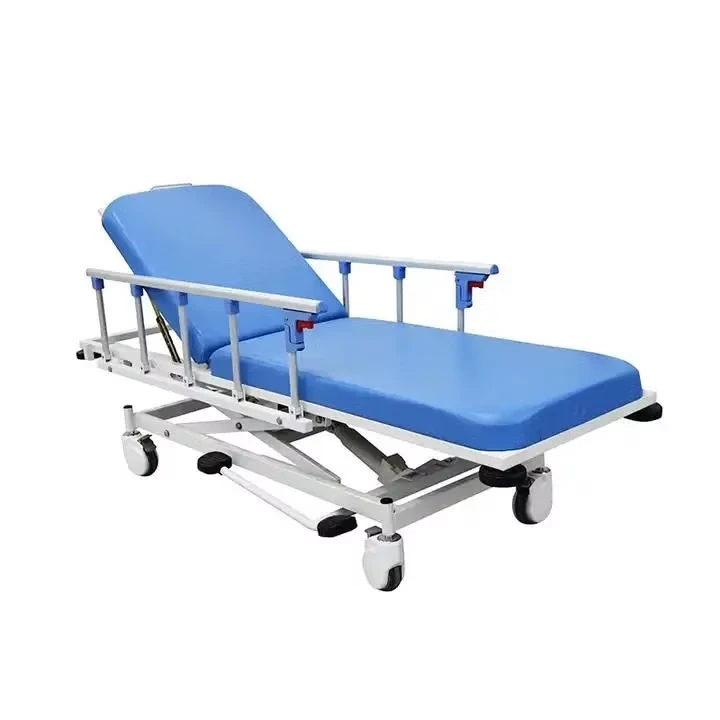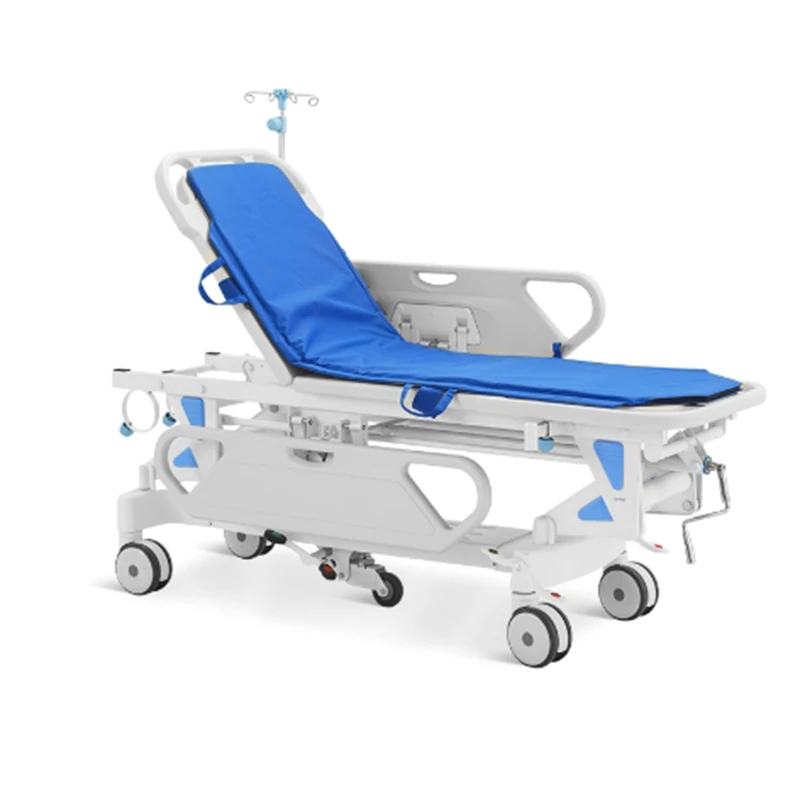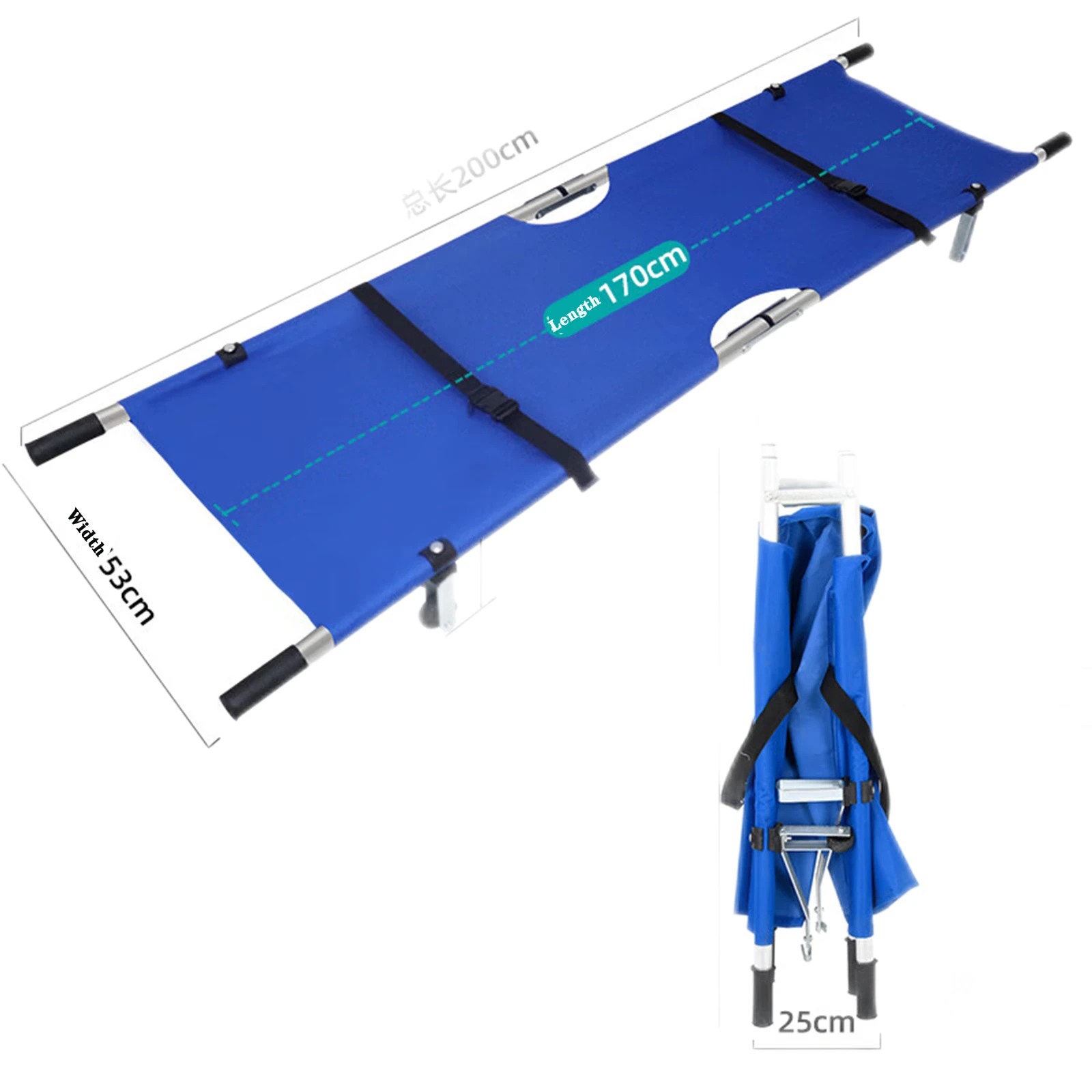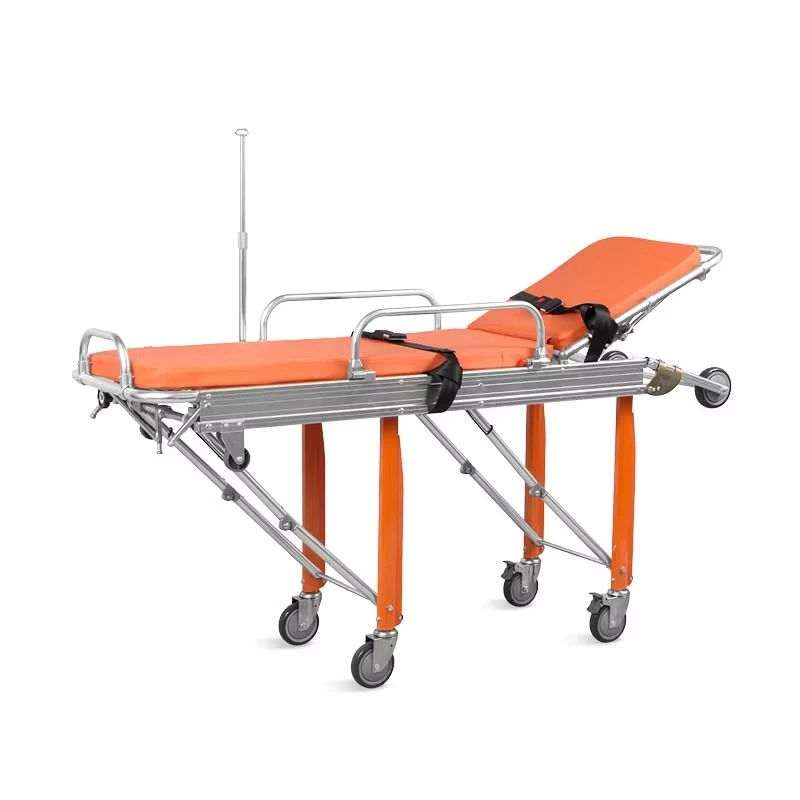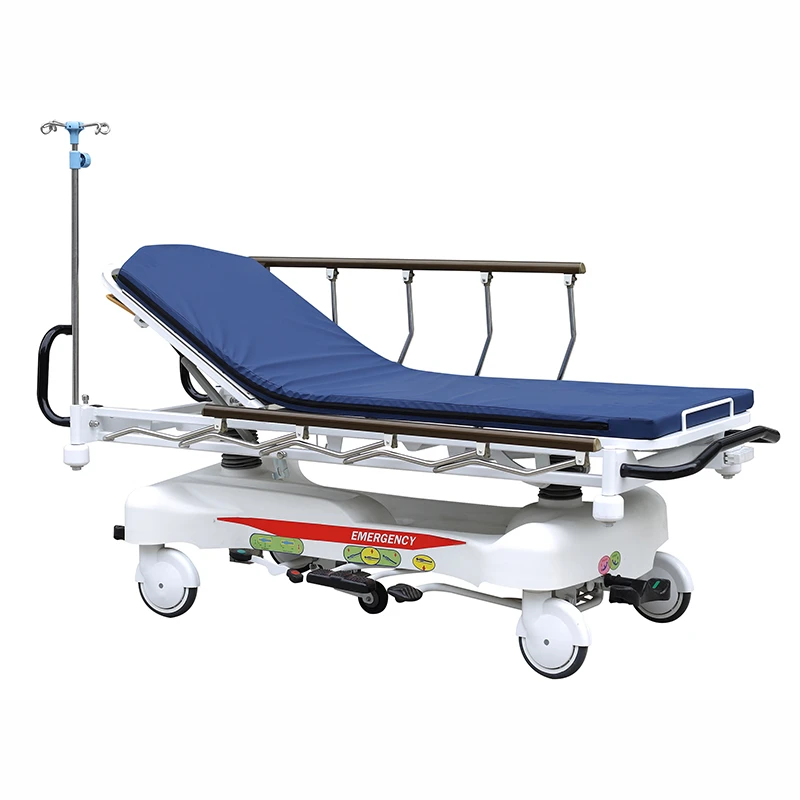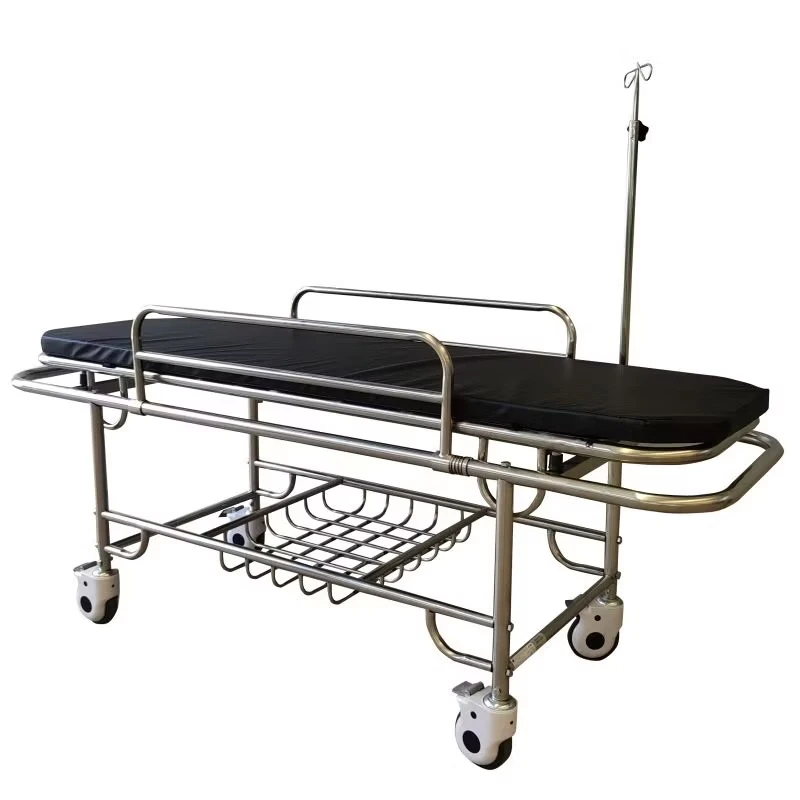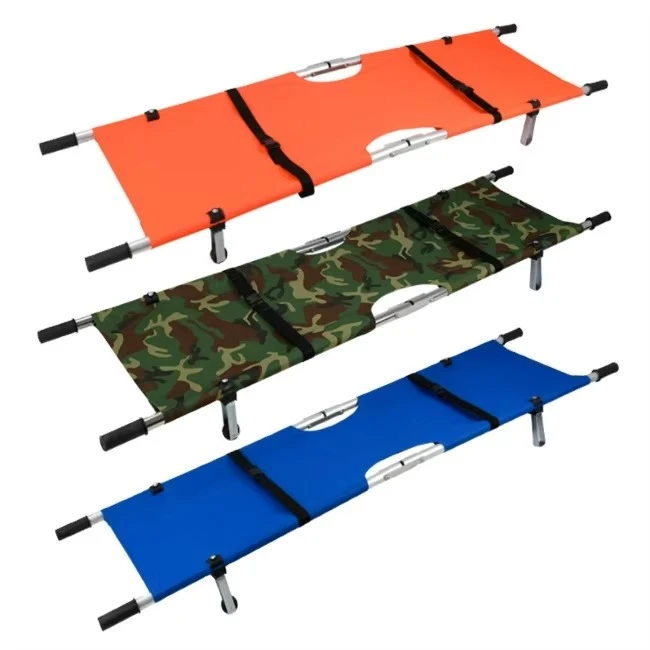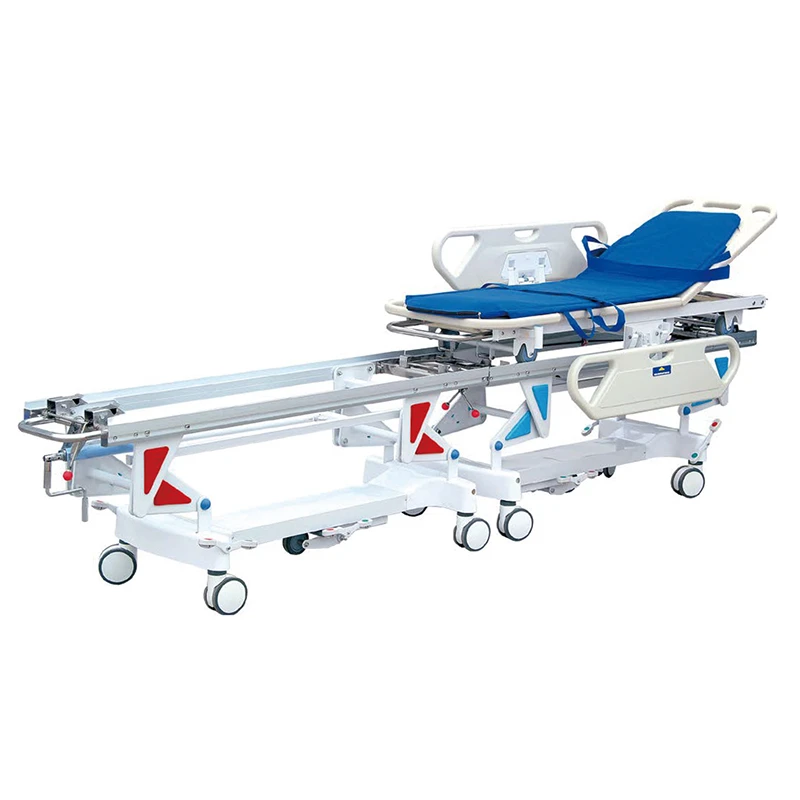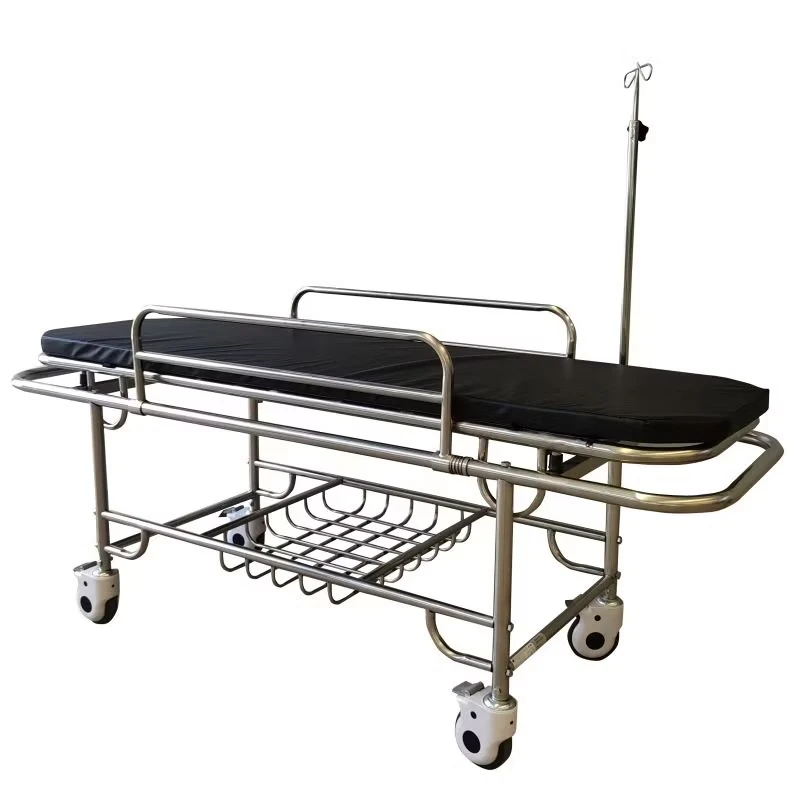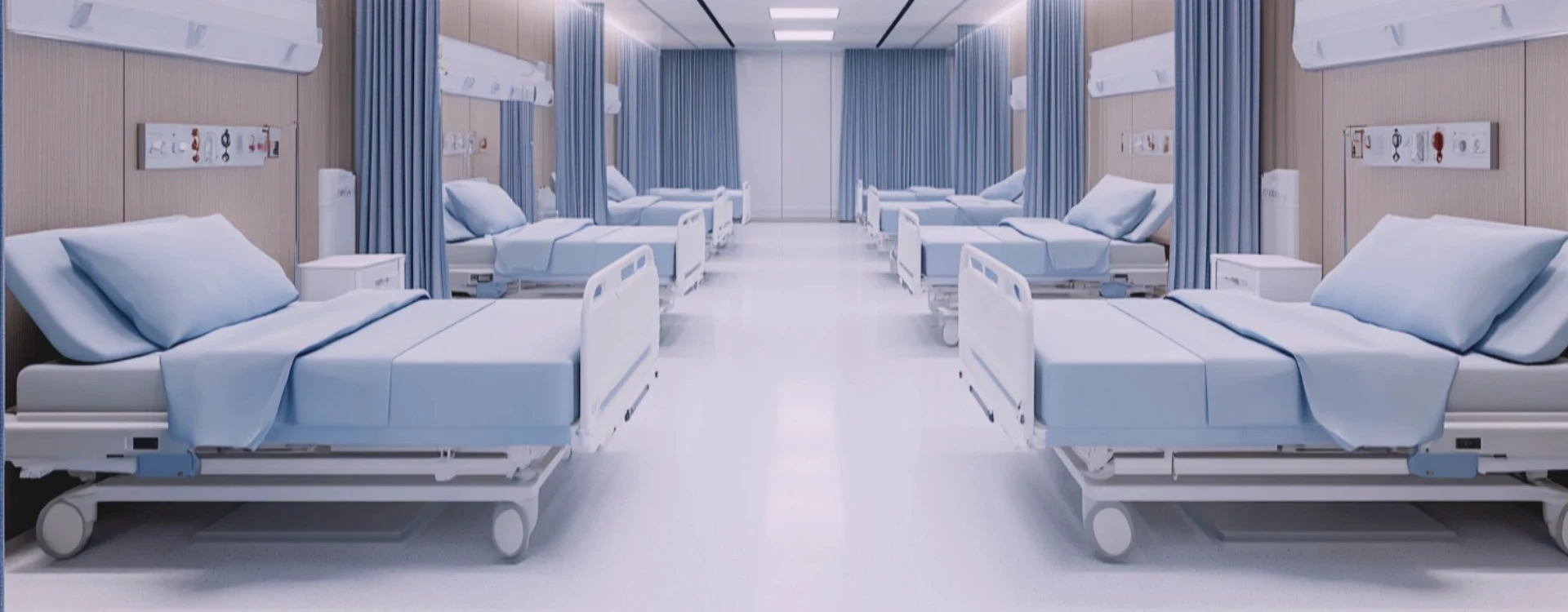
Stretcher and patient trolleys are essential pieces of equipment used in healthcare settings to transport patients safely and comfortably. Key features of a stretcher include a sturdy frame, usually made from stainless steel or aluminum, ensuring durability and stability. The bed surface is typically cushioned to provide comfort and support for patients during transport. Many stretchers come with adjustable backrests, allowing for better positioning of patients during transfers. They are equipped with wheels that are either lockable or swivel, providing easy maneuverability while ensuring that the stretcher remains stable when needed. Some models include foldable or collapsible features for easy storage, making them versatile and space-efficient. Patient trolleys, similar to stretchers, have a wider frame and often feature a more robust design, suitable for transporting patients over longer distances. Many trolleys also have height-adjustable capabilities, making them easier to load and unload from beds, ambulances, or other surfaces. Safety features, such as side rails and securing straps, are often included to prevent patient movement and ensure their safety during transport. Both stretchers and patient trolleys are designed to be easy to clean and disinfect, with materials that resist stains and the buildup of bacteria, ensuring hygienic transportation of patients.
How Do Stretchers And Patient Trolleys Benefit Healthcare Providers and Patients?
Stretchers and patient trolleys offer significant benefits to both healthcare providers and patients by ensuring safe, efficient, and comfortable transport. For healthcare providers, these pieces of equipment improve efficiency by allowing quick and easy transportation of patients between different areas of the facility, whether from an emergency room to a treatment area or to and from operating rooms. The adjustable height and ergonomic design reduce strain on caregivers, allowing them to load and unload patients with less physical effort. The wheels, which may be lockable or swivel, ensure that the trolley or stretcher can be easily maneuvered through tight spaces, even during emergency situations. Safety features, such as side rails, securing straps, and sturdy construction, help to prevent accidents and ensure the patient's stability and protection during transit. For patients, stretchers and trolleys provide comfort during transportation, as they are designed to minimize discomfort and prevent injuries. The cushioned surfaces reduce pressure points, while the adjustable backrests allow for positioning that can improve patient comfort, especially for those with medical conditions requiring specific positioning. Additionally, the secure straps and side rails help prevent falls or movements that could cause further harm, making the experience safer for the patient.
How To Choose The Right Stretcher And Patient Trolley For A Healthcare Facility?
When choosing the right stretcher or patient trolley for a healthcare facility, several factors should be considered to ensure it meets the needs of both healthcare providers and patients. Start by assessing the type of transport required—if the equipment will be used for emergency situations, look for a stretcher or trolley that offers quick deployment and easy maneuverability, with lockable or swivel wheels for stability. The frame material is an important consideration; choose one made from durable materials like stainless steel or aluminum, which will provide stability and long-term resistance to wear. If the stretcher or trolley will be used for various types of patients, consider models with adjustable height and backrest features, as these allow for better positioning and ease of patient transfer. For added safety, ensure that the stretcher or trolley includes side rails, securing straps, or even built-in patient monitoring systems if necessary. Comfort is another key factor, so opt for models with padded, pressure-relieving surfaces that reduce patient discomfort during transport. Additionally, look for equipment that is easy to clean and disinfect, as hygiene is crucial in healthcare environments. Portability is another consideration—if your healthcare facility requires transportation between multiple departments, consider foldable or collapsible models that are easy to store when not in use. Finally, evaluate the weight capacity, ensuring that the stretcher or trolley can accommodate patients of various sizes safely and comfortably.



 PDF
PDF